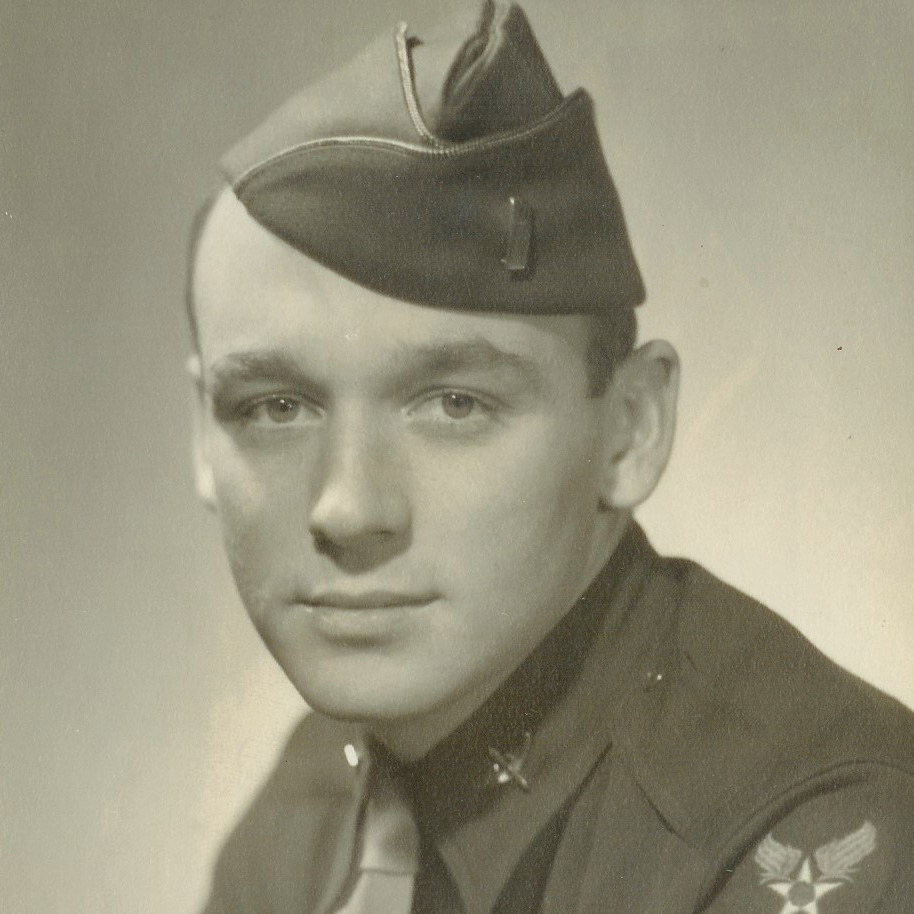
“We Have So Much to Look Forward To”:
1st Lt. Shannon Estill
1st Lt. Shannon Eugene “Gener” Estill comes alive in his letters. His persona emerges from the page in conversations with his wife, Mary Kathryn Taylor Estill. We come to know Estill through his letters, many of which are housed at The National WWII Museum. His letters are also how Sharon, Estill’s daughter, grew to know him because he was killed 4,500 miles from home in Torgau, Germany, weeks after her birth.
Shannon and Mary, who met at Franklin High School in Cedar Rapids, Iowa, are known as “Gener” and “Scootie” in their wartime letters. Mary was six months older and graduated in 1940, followed by Shannon in 1941. The young couple typified the farm country of their birth; after high school, Shannon started work at John Deere in Dubuque, Iowa, and Mary got a job at the National Oats Company in Cedar Rapids. In 1942, with the war underway, Shannon tried to enlist in the Army Air Corps, but it took some time before he was able to get his flying career underway. Gener and Scootie married on June 26, 1943, in Texas right before he began Basic Flying School; their marriage and his time in service were simultaneous and intertwined.
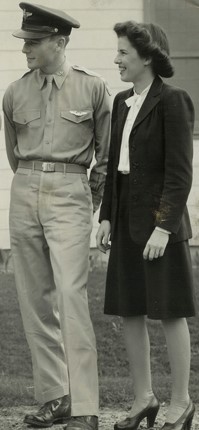
Shannon and Mary Estill in Texas, Courtesy of Dr. Sharon Taylor
New bride Mary returned alone to Iowa, but by the end of the year, she was able to reunite with her husband in Texas, where they lived together in an apartment while he became a flight instructor. Then the wartime dance began as Gener traveled the country for aerial gunnery and other advanced training. He was sent to Arizona and Fresno, California, and then to Portland, Oregon. Mary joined Gener in Los Angeles, where her brother lived, and again the couple was able to live together for a short while, long enough to start a family. Mary returned home to Iowa pregnant, while, in October 1944, Gener was sent overseas as a P-38 pilot with the 428th Fighter Squadron, 474th Fighter Group, 9th Air Force.
Through the winter of 1944 and into the spring, the 428th Fighter Squadron moved from England to France to Belgium. Gener and Mary wrote to each other constantly. Their letters present the picture of a couple who knew each other so well and who were just beginning the promise of a life together. Gener wrote in March 1944, “I just love to get your letters, sweets, they are so like you, so dear. You’re always in my heart, but they seem to bring you even nearer.” Their baby was a constant topic in their letters, at once a source of joyful anticipation and also of anxiety, as Gener worried about Scootie experiencing childbirth alone while he was fighting across the globe. He also wondered about how he would measure up as a parent. He wrote, “If mail service to the States is as bad as you recently reported, the baby will be old enough to read this when it arrives, so guess I best watch my language, eh?” Through the never-quick-enough postal lifeline, Gener and Scootie supported each other and lived for the day that they could be together again.
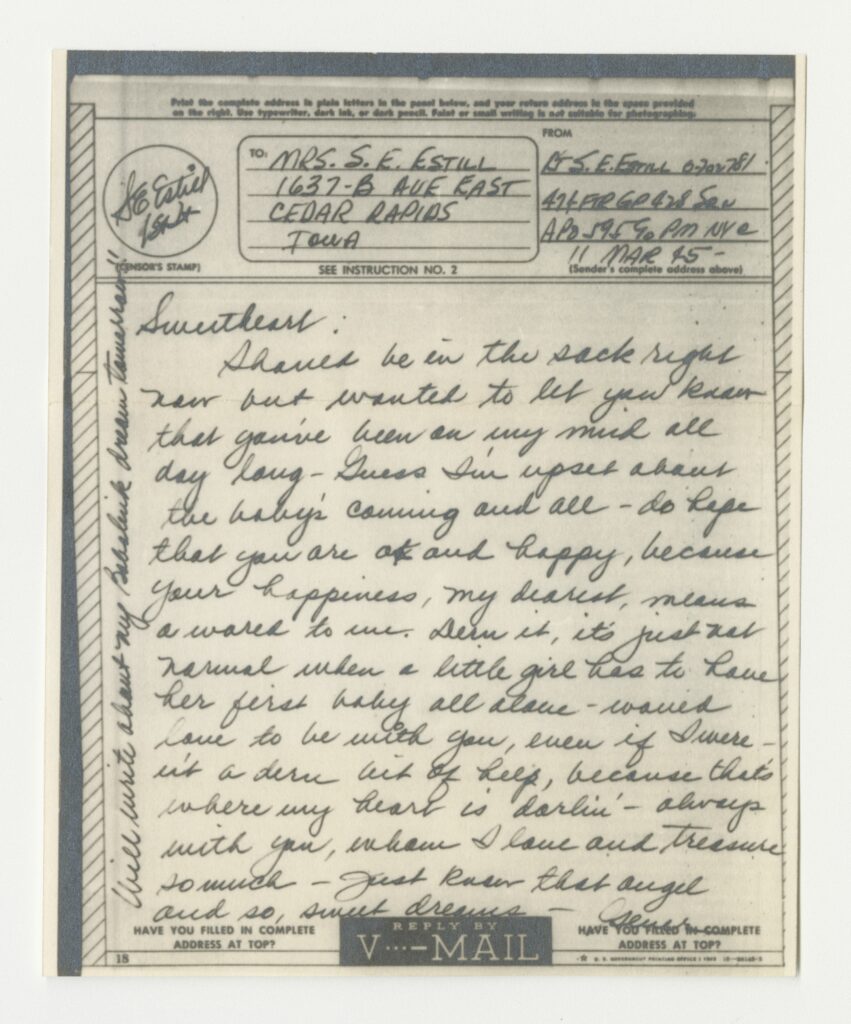
Vmail letter from Gener to Scootie. Gift of Dr. Sharon Taylor, 2019.185
In March 1945, Estill was promoted to 1st Lt., and excitement about the Estill baby spread. Gener wrote, “Every man in the 428th is worrying about the baby’s arrival.” Bets were even placed on the sex. As Mary prepared for the baby’s arrival, Gener sent letters written left-handed from England, where he was on “flak-leave” and recuperating from hand burns sustained while lighting the barrack’s stove. On March 18, he wrote,” I’m so worried, so glad, so proud, all rolled into one.” Daughter Sharon was born on March 20, 1945.
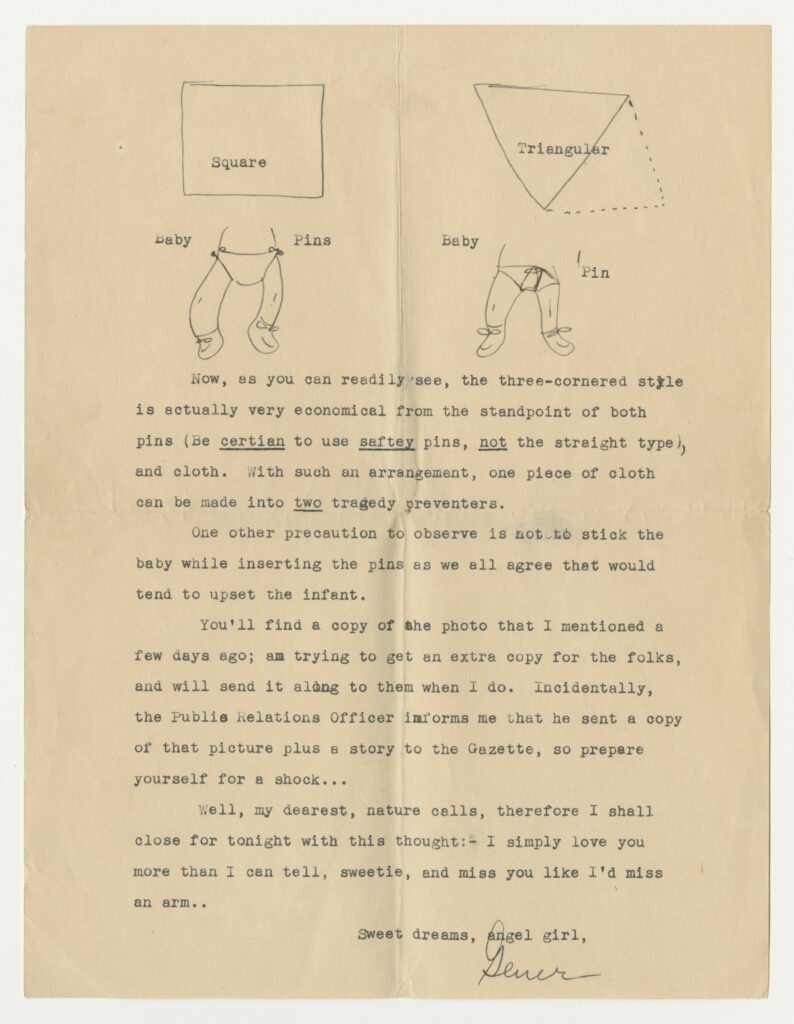
Letter from Gener to Scootie. Gift of Dr. Sharon Taylor, 2019.185
The letters in April are written to his “Angel Girls” and referred to baby “Sherrie.” They are tender, romantic, and forward-looking, saying, “I hope we can have a little house after the war—one at least 20 miles from everyone else. We’ve so much lost time to make up for, haven’t we?” In addition to the St. Christopher Medal that Estill had been flying with for protection, he added a baby bootie, which he attached to his flight helmet. His heart and mind may have been at home with his wife and daughter, but he was still in real physical danger. He wrote to Mary, “Am so thankful you’re in the States and not over here somewhere. Everything except danger is scarce.”
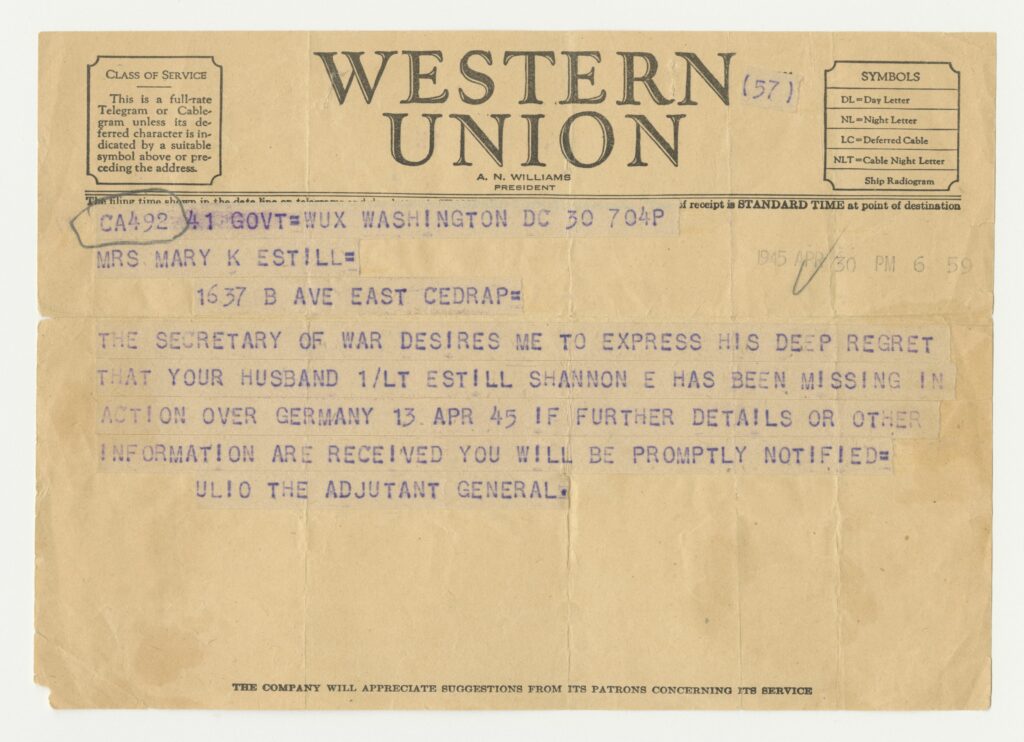
Telegram announcing MIA status of 1st Lt. Shannon Estill. Gift of Dr. Sharon Taylor, 2019.185
On April 30, Mary received the first telegram that her husband had been Missing in Action since April 13 over Germany. On April 13, 1945, Estill’s P-38J Lightning was struck by enemy anti-aircraft fire while attacking targets in eastern Germany. Another US pilot reported seeing Estill’s aircraft explode and crash. The crash site was within the Russian-controlled sector of occupied Germany, and then was in East Germany, so it became impossible to locate Estill’s remains until many years later.
In 1991, Sharon began to take steps toward her lifetime goal of finding her father and bringing him home. She reached out to other airmen, combed through her parents’ letters, and eventually traveled to Germany with the team from the Joint POW/MIA Accounting Command (JPAC, now the Defense POW/MIA Accounting Agency, or DPAA) for the recovery work on her father’s crash site.
In 2006, 1st Lt. Shannon Eugene Estill was honored with a military funeral at Arlington National Cemetery. In 2007, his name—which had been etched on the Wall of the Missing at the Netherlands American Cemetery at Margraten, Netherlands—was embellished with a star, signifying his return. Dr. Sharon Estill Taylor’s journey to discover a father she never knew is chronicled in her book, Phantom Father: A Daughter’s Quest for Elegy.
1st Lt. Shannon Eugene Estill is one of the many heroes you will come to know through his own words in Expressions of America.


